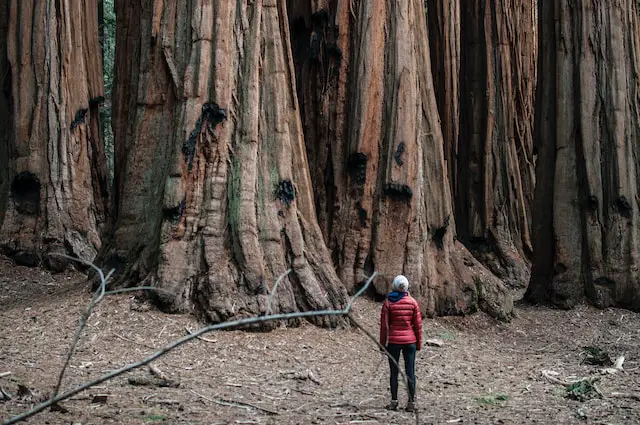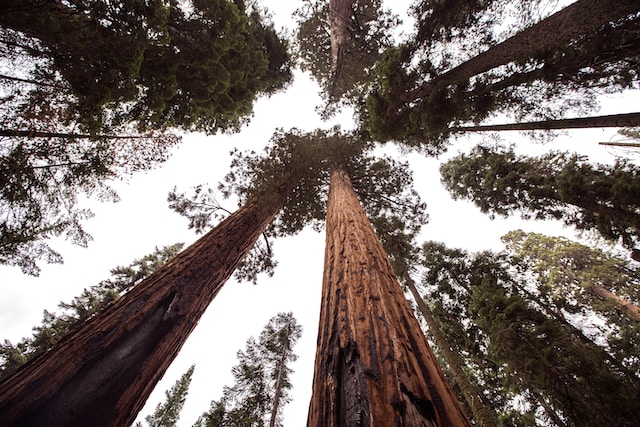Sequoia National Park, located in the southern Sierra Nevada region of California, is a testament to the grandeur of nature. Established in 1890, it spans an awe-inspiring area of approximately 404,064 acres, and is renowned for its towering sequoia trees, stunning mountain peaks, and pristine wilderness. As one of the oldest national parks in the United States, it captures a unique blend of the historical and ecological richness that has made it a beloved destination for outdoor enthusiasts worldwide.
Upon entering the park, visitors are immediately greeted by an assembly of sky-reaching trees, the park’s namesake, Sequoiadendron giganteum. These gentle giants are among the oldest and largest living organisms on the planet. The famed General Sherman tree, standing at a staggering height of 275 feet with a diameter of 25 feet at its base, is the largest known single stem tree in the world by volume. The sheer size of this tree, along with its brethren, is a humbling reminder of the timeless grandeur of the natural world. The age of these ancient beings, with some estimated to be over 3,000 years old, provides a poignant sense of historical continuity.
Walking through the sequoia groves, the sequoias’ cinnamon-colored bark and the profound silence under their enormous canopy have a soothing effect. There’s something about being in their midst that provides a deep sense of tranquility. In spring and summer, wildflowers splash color on the forest floor, enhancing the aesthetic appeal of the scene. In the fall, the changing colors of foliage create a spectacle of natural artistry, while winter brings a serene blanket of snow, further amplifying the majestic charm of the sequoias.
Sequoia National Park, however, is more than just its namesake trees. It is home to Mount Whitney, the highest point in the contiguous United States, standing tall at 14,505 feet. Mount Whitney offers a challenging hike that rewards with panoramic views of the park’s diverse terrain. The sight of the rugged mountain terrain, set against the backdrop of the expansive sky, offers an exhilarating experience.
Crystal Cave, another marvel in the park, showcases a different facet of the park’s diversity. This marble karst cave, adorned with stalactites, stalagmites, and other exquisite formations, unfolds a subterranean world of wonder. The cave’s cool, shadowy interior, accentuated by the sparkle of its mineral formations, provides a striking contrast to the sunlit grandeur of the park’s surface.
Among the park’s vibrant ecology, one can encounter a rich variety of wildlife. Black bears, mule deer, and over 200 species of birds are inhabitants of this park, thriving in the lush meadows, dense forests, and swift rivers. An encounter with these creatures adds another layer of thrill to the park’s exploration.

Aside from its natural attractions, Sequoia National Park is also committed to education and conservation. The Giant Forest Museum offers interpretive displays about the natural history of the park and the lifecycle of sequoias. Here, visitors can learn about the ecological importance of these magnificent trees and the efforts to preserve them for future generations.
While the park offers various activities, such as hiking, camping, fishing, and horseback riding, it also invites visitors to embrace the peace and solitude that the wilderness offers. It’s a place to disconnect from the constant bustle of modern life and reconnect with nature. The serene beauty of the park, under the watch of the ancient sequoias and the boundless sky, allows for quiet contemplation and rejuvenation.
The park’s management emphasizes the Leave No Trace principles, urging visitors to respect the natural environment. These principles ensure that the park’s beauty and ecological health are preserved for future generations Indeed, the Leave No Trace principles are foundational in the management and enjoyment of Sequoia National Park. These guidelines aim to minimize the human impact on the park’s ecosystem while fostering a sense of responsibility and respect towards the environment among visitors. They are based on the understanding that preserving the park’s unique beauty and biodiversity is a shared responsibility.
The seven principles of Leave No Trace are as follows:
Plan Ahead and Prepare: Visitors are encouraged to research the park’s rules and regulations before their visit, ensuring they have the proper equipment and are prepared for the park’s conditions and potential hazards. This principle also entails understanding and respecting the limits of the park and its facilities.
Travel and Camp on Durable Surfaces: Visitors should stick to established trails and campsites to avoid damaging the park’s ecosystem. The roots of the sequoia trees are shallow and sensitive; therefore, straying from designated paths can inadvertently harm these ancient giants.
Dispose of Waste Properly: All trash and litter should be packed out of the park. Human waste should be disposed of in a way that minimizes its impact on the environment and other visitors.
Leave What You Find: The removal of natural or cultural artifacts is strictly prohibited. Visitors are encouraged to enjoy the park’s beauty without disturbing its natural state. This ensures that everyone can experience the park as it is meant to be seen.
Minimize Campfire Impact: Campfires can cause lasting damage to the environment. As such, visitors are encouraged to use designated fire rings, fire pans, or portable stoves. They must ensure that fires are always attended and completely extinguished before leaving.
Respect Wildlife: Observing wildlife from a distance prevents disturbances to animals and protects visitors. Feeding animals is not allowed, as it disrupts their natural behaviors and diets.
Be Considerate of Other Visitors: Respect for others ensures a positive experience for all visitors. This includes keeping noise levels to a minimum, respecting the privacy of others, and adhering to the park’s rules and regulations.
Through adherence to these principles, each visitor plays a vital role in preserving the splendor and ecological health of Sequoia National Park. The park’s majesty and grandeur are a shared treasure; protecting it is a shared duty. It is our responsibility to ensure that future generations can experience the awe and wonder we feel when standing beneath the towering sequoias or gazing upon the park’s majestic vistas. By leaving no trace, we leave a legacy of respect and preservation for those who will follow in our footsteps.







